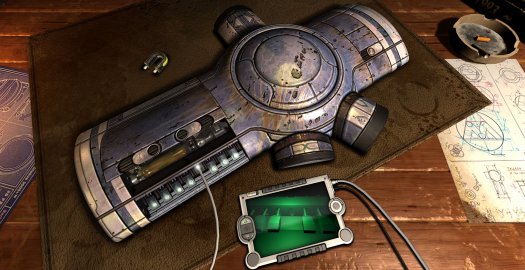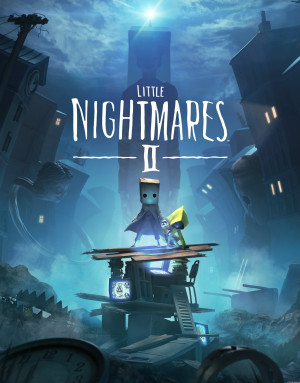Review for Machinika Museum

Imagine yourself in the coolest job in the world: opening boxes of alien technology and poking and prodding it all to figure out what everything does. What mysterious secrets might you find? What fun challenges could be locked inside each one? That's the position you find yourself in when playing Littlefield Studio's Machinika Museum. It's a notable entry in a growing subgenre of adventure games that combine puzzle boxes and escape-the-room scenarios that will mostly delight with its many hands-on challenges, even if its edges could have used a bit more polish.
Machinika Museum is a puzzle game heavily influenced by The Room series, but with a more space-age tone and style. You play as an employee of the National Museum of Exo-Cultures, working late into the night to decipher the mechanics of some new artifacts that were just shipped in. Much like in the game’s inspiration, each scene here is centered around a single multifaceted object riddled with hidden containers and functions that reveal themselves behind simple tactile puzzles. The added complication is that you’re dealing with extraterrestrial technology instead of the more familiar human variety.
Each chapter begins with you standing in the center of your office in front of a container of some kind, affixed with a note vaguely describing its contents. These tend to be boxes locked with trick drawers or elaborate airlocks, and usually a keypad lock for which the combination must be found and entered. Once opened, you’ll find a strange alien device inside and the game shifts you back to your desk to investigate it. The artifacts, much like the boxes, are very hands-on and logical. But unlike the boxes, the process of discovery is quite different since you don't even know what they're supposed to do.
Most of the game is played from two fixed locations that alternate once per chapter. You use the mouse (or theoretically a controller, which I could not make work due to a known bug) to do everything. You can click to zoom in on sections of the device or box seated in front of you, and you manipulate buttons, switches, and other physical elements by clicking and dragging. You can also drag the camera laterally around the object to inspect every side of it. The inventory is on the right-hand side of the screen, from which items can be selected and used in puzzles.
For each of the alien mechanisms, your goal is simply to figure out what it does. At first you’ll need to examine each aspect of the machine and find the puzzles that unlock its individual functions. For example, you may be faced with a series of containers which, when turned, change colors. You're given a visual cue – if you’re observant enough to find it – as to which colors are required, and that's the puzzle you set about solving. Once that's done, a section of the apparatus powers up, revealing another interesting element on the road to getting the whole thing up and running.
Machinika Museum adds another layer of depth to the gameplay by giving you a series of tools to help figure out tricky parts of each mechanism. There's a 3D printer (the operation of which also serves as the first chapter of the game) that can duplicate any component you find, which is especially useful if one of a pair of items is broken or missing. There's an endoscope, which can be used to send a small camera into cracks or openings to diagnose problems inside a machine while you monitor it through a viewscreen. And there's an adaptable screwdriver, which can change its shape to fit various sockets, creating some fun pattern-matching puzzles.
The screwdriver projects its current shape in a display of light that you can use to match each unique socket pattern, sort of like a kaleidoscope, but actually adjusting it can be frustrating. Each pattern has two overlapping layers that you’ll need to deal with one at a time to arrange the correct shape, position and orientation through a series of dials on the side of the tool. The problem is that you can reproduce a shape perfectly, but if you don't match each shape in the right layer, the puzzle can’t be solved. Say you need three interlocking triangles and two opposing squares to fit the socket, and the game wants you to use the first layer to make the triangles and the second to make the squares. If you reverse those, the shape will look identical to its socket but will not work correctly. The screwdriver can also be finicky about precision and positioning, so you can bang your head against it for a while before determining whether you're just a millimeter off or if the game is being particular about the configuration required.
This is sort of a theme in Machinika Museum. While it captures what's satisfying and interesting about the puzzle box/escape room subgenre (adding a bit of its own flair along the way), it lacks a bit of the polish that some of its more accomplished predecessors have displayed. The graphics, for instance, are certainly fine here. Each object succeeds at portraying the appearance of a strange alien metal that's similar to our own and slightly beaten up, interesting to look at in its own right and hinting at an untold story behind it. But there's no point where you don't feel like you're looking at a video game creation. The textures are just slightly warped and blurry, the edges just a little distorted.
The slightly unnatural nature of the visuals is compounded by the animations, which fall far afield. When things spark or glow, it can feel like a graphical jump back in time to something from ten years ago. And while the main attraction of such puzzle games is often the very tactile feel of sliding an object or turning a dial and hearing them drag and click, the sound effects here feel just a little out of sync and fabricated. Not that you don't still get those welcome clicks and scrapes and whirs, they just don't resonate in a way that makes it feel like you're really there and making it happen.
Throughout the game’s six chapters, each device you examine begins to reveal a narrative about its source, and you’ll start to notice connections between them that culminate in an exciting finale. As you figure out what each one is for, and why it is no longer operational, you also begin to realize how they got here. The story is partly told through the character’s thoughts shared via pop-up text boxes, but mostly through visual cues shown as you progress. The mood established by placing you all alone in a dark office only heightens each revelation. The night sky is visible through the skylights overhead, and the sounds of far-off footsteps underline the eerie loneliness of the situation. This makes every discovery feel like some kind of dangerous secret that's yours alone, effectively eliciting a thought in your mind: “Should I really be doing this?”
I ended up playing the entire game in one two-hour sitting, reveling in this tension. I needed to know what brought these alien artifacts to my office. Much like the protagonist, I had to throw myself into my work late into the night and get to the bottom of the mystery. Unfortunately, the atmosphere is consistently broken by the abrupt chapter endings. As you solve each device and watch it power up, the room spins slightly and a small piano riff plays, interrupting the (unobtrusive but admittedly monotonous and droning) soundtrack as a garish “Chapter Complete” graphic appears on-screen, asking you to share your progress on Twitter and Facebook. While it’s understandable that a small studio might want to urge players to spread the word on social media, every time it happened it pulled me right out of the game.
In the most important areas, however, there were no puzzles or bits of narrative that I didn't enjoy. While the graphics and sound fall a bit short of the realistic tone the developers seemed to be going for, overall the game is an absorbing experience with satisfying and logical puzzles that reveal an increasingly compelling story in between. The game ends on a cliffhanger and the promise of a sequel, which I will very much be looking forward to.
If you're the sort of person who likes solving puzzles above all else, Machinika Museum will certainly scratch that itch. And if you've never played a game of this nature before, think of it like an enjoyable equivalent of putting together IKEA furniture without the instructions (minus the cuts and the scrapes and the heavy lifting). The gameplay here is incredibly intuitive, which is crucial when dealing with strange alien devices, and delivers a great feeling of satisfaction each time you succeed. You’ll tinker and prod the pieces until they fit together just so, and at the end you have a nifty little device to feel proud of constructing. There are some rough edges here, but there's far more fun to discover in this lonely but incredibly cool museum of alien technology.





























